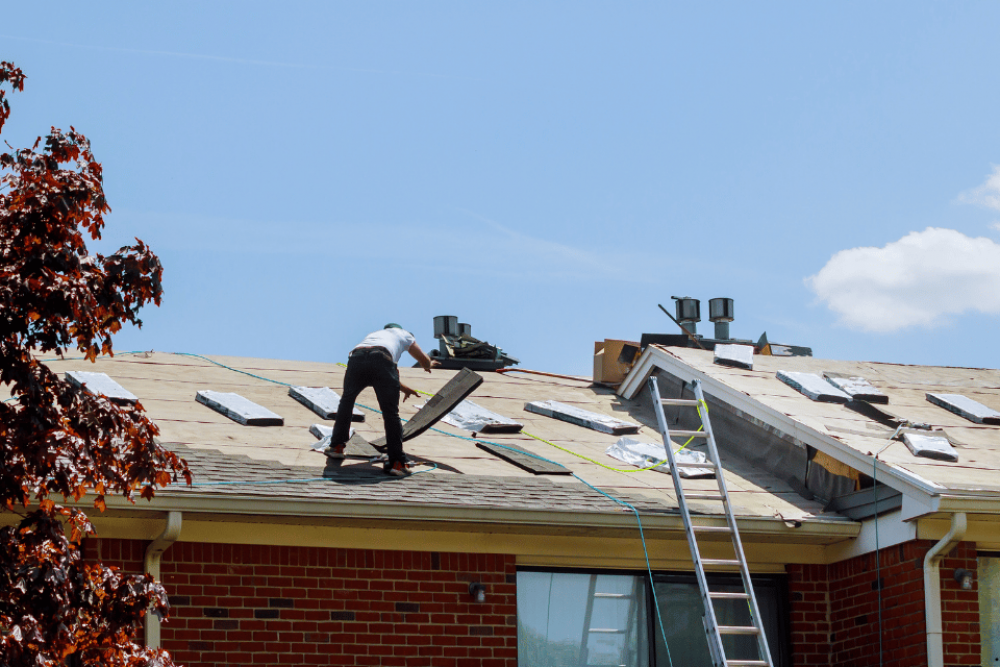
Roofing Material Options: Choosing the Right Roofing Material for Your Property
Choosing the right roofing material for your property is a crucial decision that affects your home's durability, aesthetic appeal, and overall value. With many options available, it’s important to consider factors such as climate, budget, and maintenance requirements. We will explore various roofing materials at Roofs For Life, Inc. and provide insights into how to select the best option for your specific needs.
Asphalt Shingles
Affordability and Versatility
Asphalt shingles are one of the most popular roofing materials due to their affordability and versatility. They are available in a wide range of colors and styles, making it easy to match the aesthetic of any home. Asphalt shingles are relatively easy to install, which can reduce labor costs. They also provide adequate protection against weather conditions, including rain, wind, and hail. However, they may have a shorter lifespan than other materials, typically lasting between 20 and 30 years.
Maintenance and Durability
Asphalt shingle maintenance is generally straightforward, involving regular inspections and prompt repairs of any damaged shingles. While durable, they can be susceptible to damage from extreme weather conditions and may require more frequent maintenance in harsh climates. Overall, asphalt shingles offer a cost-effective and visually appealing option for many homeowners, particularly those with budget constraints.
Metal Roofing
Longevity and Energy Efficiency
Metal roofing is known for its longevity and energy efficiency. Materials such as steel, aluminum, and copper can last 50 years or more with proper maintenance. Metal roofs are highly resistant to weather-related damage, including high winds, hail, and fire. Also, metal roofing reflects solar heat, reducing cooling costs in warmer climates. This energy efficiency makes metal roofing an environmentally friendly option that can contribute to lower energy bills.
Aesthetic and Installation Considerations
Metal roofing is available in various styles, including panels, shingles, and tiles, allowing homeowners to achieve a modern or traditional look. However, the initial cost of metal roofing can be higher than other materials. Installation requires specialized skills and tools, which can also increase labor costs. Despite the higher upfront investment, the long-term benefits of durability and energy savings make metal roofing a worthwhile consideration for many properties.
Tile Roofing
Durability and Aesthetic Appeal
Tile roofing, including clay and concrete materials, is celebrated for its durability and aesthetic appeal. Tiles can last 50 to 100 years and resist fire, rot, and insect damage. They are available in various styles and colors, adding a distinctive and elegant look to any home. Tile roofing is particularly popular in Mediterranean, Spanish, and Southwestern-style architecture.
Weight and Installation
One significant consideration for tile roofing is its weight. Tiles are heavy, and not all structures are designed to support this added weight. It may be necessary to reinforce the roof structure before installation, which can increase the overall cost. Additionally, tile roofing can be more expensive due to the specialized labor required. However, the long lifespan and minimal maintenance needs often offset these initial costs.
Slate Roofing
Longevity and Natural Beauty
Slate roofing is renowned for its longevity and natural beauty. Slate tiles can last over a century, providing unmatched durability and resistance to the elements. The natural stone offers a unique and timeless appearance that enhances the curb appeal of any property. Slate roofing is an excellent choice for homeowners looking for a premium, long-lasting roofing solution.
Cost and Structural Requirements
The primary drawback of slate roofing is its high cost. Both the material and installation are significantly more expensive than other roofing options. Additionally, similar to tile roofing, slate is heavy, and the roof structure must be capable of supporting the weight. This may require additional structural support, further increasing the cost. Despite the high upfront investment, the durability and aesthetic appeal of slate roofing make it a desirable option for many high-end properties.
Wood Shingles and Shakes
Natural Aesthetic and Insulation
Wood shingles and shakes offer a natural and rustic aesthetic that complements many architectural styles. Made from cedar, redwood, or other types of wood, they provide excellent insulation and help regulate indoor temperatures. With proper maintenance, wood shingles and shakes can last up to 30 years and are biodegradable, making them an environmentally friendly option.
Maintenance and Fire Resistance
One significant consideration for wood roofing is its maintenance requirements. Wood shingles and shakes are susceptible to rot, mold, and insect damage and require regular treatment to maintain their integrity. Additionally, wood roofing is less fire-resistant than other materials, although treated wood products can improve fire resistance. Homeowners must weigh these factors against the natural beauty and insulation benefits of wood roofing.
Conclusion
Selecting the right roofing material for your property involves evaluating durability, aesthetic appeal, cost, and maintenance requirements. Whether you choose asphalt shingles for their affordability, metal roofing for its longevity and energy efficiency, tile roofing for its durability and distinctive look, slate roofing for its natural beauty and longevity, or wood shingles for its rustic charm, each material has its unique advantages and considerations. By carefully assessing your needs and preferences, you can make an informed decision that enhances the value and longevity of your home’s roof. Investing in the appropriate roofing material ensures your home remains protected and visually appealing for years.

